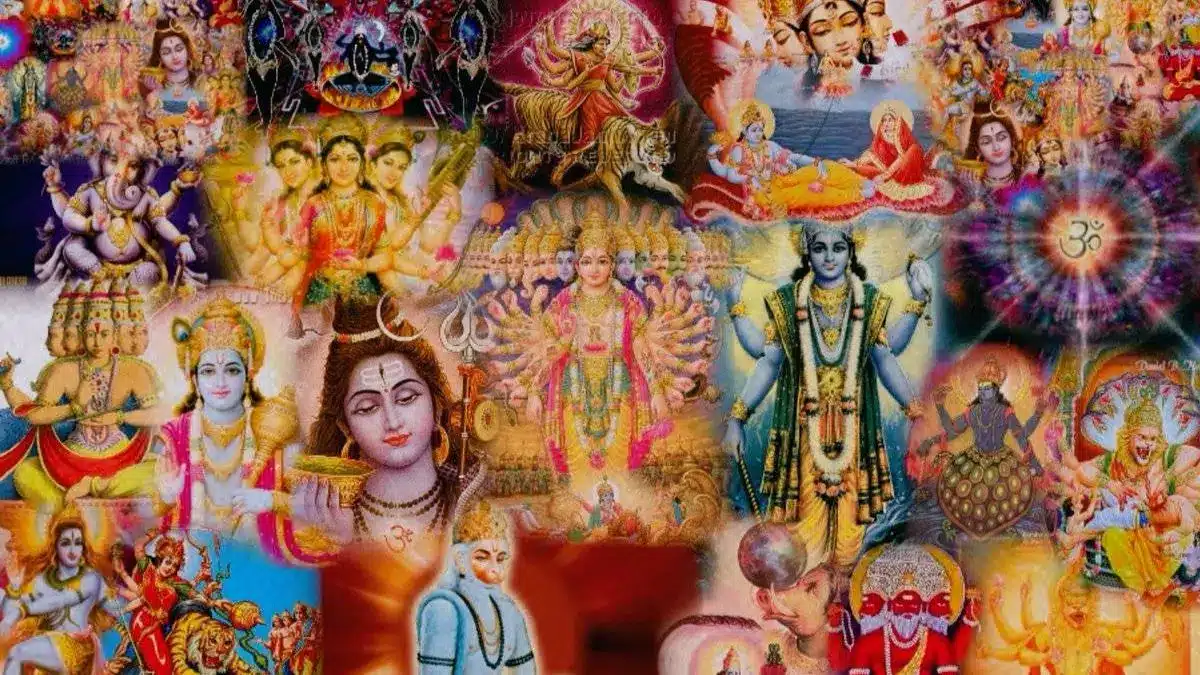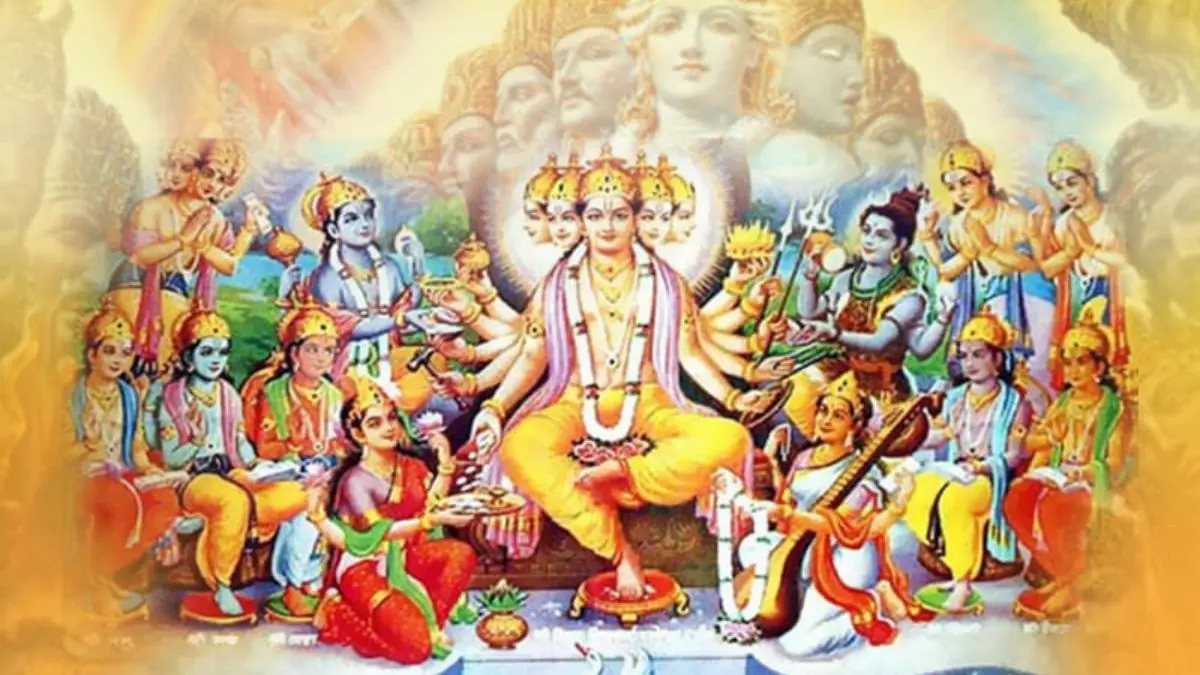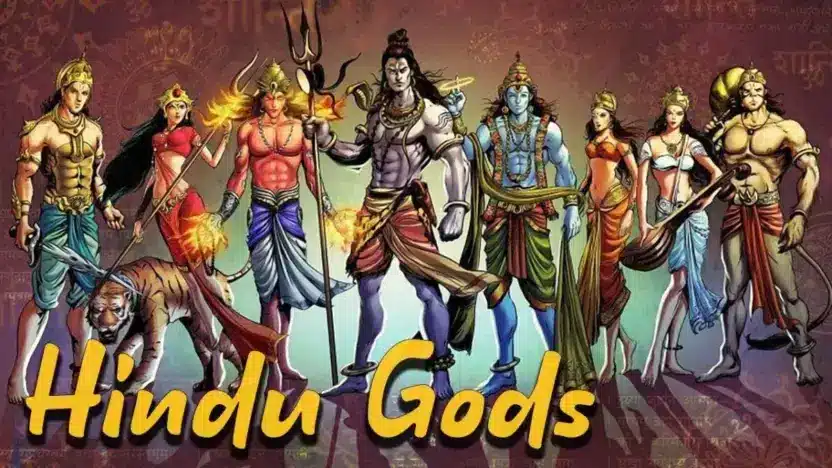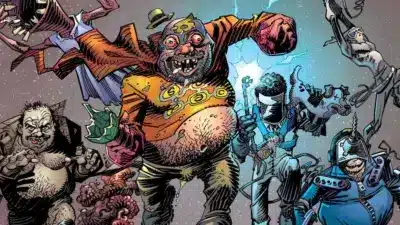Hinduism is often perceived as a religion filled with an overwhelming number of gods and goddesses. You may have heard the claim that there are 33 crore (330 million) Hindu deities. This staggering figure, while widely circulated, is one of the biggest misconceptions about the religion. The truth is far more fascinating and nuanced. Let’s unravel the mystery surrounding “How Many Hindu Gods Are There?”, explore the meaning behind the term “33 Koti,” and examine how Hinduism defines divinity in its various forms.
The Misconception: 33 Crore Gods
One of the most enduring myths about Hinduism is the idea that it has 33 crore, or 330 million, gods. While this number often gets tossed around in popular culture and casual conversations, it stems from a linguistic and interpretational error.
The confusion arises from the Sanskrit word “Koti.” In Sanskrit, “Koti” can mean both “crore” (10 million) and “type” or “category.” Over time, “33 Koti Devas” was wrongly interpreted as 33 crore, or 330 million, gods instead of its intended meaning: 33 categories or types of deities.
This misinterpretation is like hearing the word “bank” and assuming someone is referring to a riverbank when they actually mean a financial institution. Context matters, and in this case, it changed the way generations understood Hinduism’s pantheon.
The “33 Koti” Concept Explained
The term “33 Koti” (त्रिदश, Tridaśa) appears in ancient Hindu scriptures, particularly the Vedas. These texts mention 33 principal deities, divided into specific groups based on their functions and domains. Here’s how the 33 types break down:
The 12 Adityas
These are solar deities, each representing different aspects of the sun and cosmic order. They include:
- Varuna
- Mitra
- Aryaman
- Bhaga
- Amsa
- Dhuti
- Tvashta
- Pushan
- Savitar
- Vishnu
- Ansha
- Vivasvan
The 11 Rudras
Associated with storm, destruction, and transformation, the Rudras are fierce deities, often considered aspects of Lord Shiva. They are:
- Kapali
- Pingala
- Bhima
- Virupaksha
- Vilohita
- Ajesha
- Shasana
- Shasta
- Shambu
- Chanda
- Dhruva
The 8 Vasus
These are elemental gods representing natural forces or phenomena:
- Agni (Fire)
- Prithvi (Earth)
- Vayu (Air)
- Antariksha (Space)
- Aditya (Sun)
- Dyaus (Sky)
- Soma (Moon)
- Nakshatra (Stars)
The 2 Ashvins
These twin gods are divine physicians and are associated with health, medicine, and dawn:
- Nasatya
- Dasra
Together, these 33 deities form the core pantheon of early Vedic Hinduism. They symbolize the fundamental elements and principles that govern the universe.

Why So Many Gods Then?
If there are only 33 main types of deities, why does Hinduism appear to have millions of gods and goddesses?
The answer lies in the religion’s inclusive, diverse, and localized nature. Hinduism is not centralized around a single holy book or a uniform doctrine. Instead, it has evolved over thousands of years, adapting to different regions, cultures, and traditions. As a result, the divine takes on countless names, forms, and attributes across the Indian subcontinent.
Every village might have its own local deity. Every family may worship a particular form of a god or goddess. Each philosophical school emphasizes different divine figures. What appears to be millions of gods are often multiple manifestations or aspects of a few core deities.
Major Gods and Their Avatars
Many of the “gods” people refer to are actually avatars or forms of a single god. For instance:
- Vishnu is one of the principal deities in Hinduism, but he is known through his ten avatars (Dashavatara) like Rama, Krishna, and Narasimha.
- Shiva has numerous forms such as Nataraja, Bhairava, Ardhanarishvara, and more.
- Devi (The Goddess) manifests as Durga, Kali, Lakshmi, Saraswati, Parvati, and many others.
These forms serve different symbolic purposes and are worshipped in different contexts, but they ultimately point back to a single divine essence.
Monotheism, Polytheism, or Something Else?
Another common question is whether Hinduism is monotheistic or polytheistic. The answer? It’s more complex than either label.
Hinduism can be:
- Monotheistic when seen through philosophies like Advaita Vedanta, which believes in one ultimate reality (Brahman) behind all forms.
- Polytheistic in practice, as people worship various deities for different needs and occasions.
- Henotheistic, which means worshipping one god while acknowledging the existence of others.
This flexibility allows Hindus to see the divine in everything and everyone.
Local Deities and Folk Traditions
In addition to the well-known deities of classical Hinduism, there are countless local and regional gods. These are often tied to nature, ancestors, or village protection and are sometimes later absorbed into the mainstream Hindu pantheon.
For example:
- Ayyanar is a popular village god in Tamil Nadu.
- Khandoba is worshipped in Maharashtra.
- Yellamma is revered in Karnataka.
These deities might not be mentioned in the Vedas but are still deeply respected and widely worshipped.
Philosophical Unity in Diversity
Despite the diversity of deities, many Hindu philosophies emphasize that all gods are different aspects of the same supreme reality. This idea is encapsulated in the phrase:
“Ekam sat vipra bahudha vadanti”
“Truth is one; the wise call it by many names.”
This belief underpins the Hindu attitude toward religious pluralism and inclusivity. Whether one worships Krishna, Shiva, Durga, or a local goddess, they are ultimately connecting with the same universal truth.
So, How Many Hindu Gods Are There?
If we go strictly by Vedic texts, the number of gods is 33 types, as categorized under the “33 Koti.” These represent elemental and cosmic forces fundamental to life and the universe.
If we include avatars, regional manifestations, local deities, and personal forms of devotion, the number becomes practically uncountable. But it doesn’t mean Hinduism believes in 330 million separate, disconnected gods. Instead, it reflects a worldview where divinity is infinite, omnipresent, and experienced in countless ways.

Conclusion
Hinduism’s divine pantheon is not a chaotic collection of gods, but rather a complex, meaningful system where each deity, form, or avatar serves a unique purpose. The number “33 crore” is a misunderstanding rooted in language, not theology.
In essence:
- There are 33 primary categories of gods according to the Vedas.
- Hinduism expresses the divine in countless forms to accommodate diverse cultures and spiritual paths.
- At its core, Hinduism teaches that all gods are manifestations of a single, universal reality.
So, how many gods are there in Hinduism? Technically: 33 types. Spiritually: as many as needed to connect with the divine.
Also Read: Why Hindu Mythology Emphasizes Dharma and Karma



